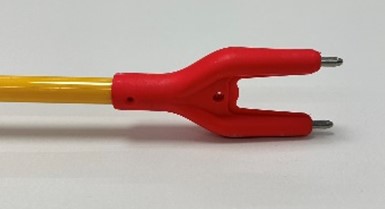By 2030, the volume of production of veterinary preparations in the Russian Federation will exceed 82 billion rubles

The largest share - 70% - belongs to products for farm animals, poultry, and 30% - products for companion animals. Compared with a stable figure of 54-56 billion rubles. for the period 2019-2021 This is a rapidly growing market. According to the forecasts of the association, by 2030 the volume of production of veterinary preparations in the Russian Federation will grow to 82.5 billion rubles.
The main categories of animal medicines used are:
● immunobiological (vaccines and sera) – 45% of the market or 28.8 billion rubles.
● chemical and pharmaceutical (other drugs) – 55% or RUB 34.9 billion.
Russian veterinary companies that are members of the NVA, the Vetbioprom association, and the FGBI ARRIAH account for 88% of domestic production.
There is a positive trend in the growth of the share of Russian products in the market of veterinary drugs: from 2018 to 2022. it increased from 30 to 43%. A significant contribution to the increase was made by enterprises belonging to the National Veterinary Association, which increased the volume of production over the specified period by 2.4 times.
At the end of 2022, Russian manufacturers occupied more than half of the market for chemical and pharmaceutical preparations. The category of products for hygiene and disinfection is the most import-independent group: only 9% are accounted for by foreign manufacturers, and, accordingly, 91% of products are produced by Russian companies.
There are enough antibacterial agents produced in the Russian Federation - 52%, competition is felt between Russian antibiotics. In addition, large manufacturing enterprises have sufficient capacity to cover the needs for antibacterial drugs in the event of a sharp increase in demand in the next year and a half.
A certain dependence on imports remains in a number of areas:
antiparasitic drugs - only 16% is produced in RUSSIA,
coccidiostats - 21% of domestic drugs,
hormones - 23%,
immunobiological preparations - 33%.
However, a number of enterprises are implementing programs to commission new capacities and expand the range in these categories, as well as in the segment of sterile injectables and suspensions, which also have growth potential.
The goal of this year is to reduce the share of imports in chemical pharmaceuticals and immunobiology. And the potential of Russian manufacturers, based on market trends, is significant: since 2018, the production of vaccines has increased by 2.3 times, hormones - by 2 times, and all categories of veterinary products - by 70%.
Among domestic vaccines, almost the entire line is presented to combat the main infectious diseases of animals and birds.
In the segment of veterinary drugs for farm animals and poultry, the market shares of veterinary drugs in 2022 are distributed as follows: 61% (27.2 billion rubles) - imports, 39% (17.5 billion rubles) - Russian production. Of these, immunobiological drugs - 41% (18.4 billion rubles), chemical-pharmaceutical - 59% (26.3 billion rubles).
Domestic production of vaccines for farm animals and poultry is 19% or equal to 3.3 billion rubles.
State support provided to manufacturers of veterinary drugs in the field of simplified registration of medicines makes it possible to introduce new technically complex and capital-intensive programs. Such projects will allow covering the needs of the Russian market for antiparasitic drugs, coccidiostats and hormones within two years.
In 2022, thanks to simplified registration, 30 new drugs were launched, which is twice as many as in 2021. In 2023, 60 products are planned for launch.
The separation of the veterinary industry into a separate area of economic activity in March of this year allows us to hope for further support for domestic producers: maintaining simplified registration, accelerating validation procedures, developing targeted programs, subsidizing and concessional lending, as well as obtaining the status of backbone companies for companies that account for 88% of Russian production. enterprises.
Large domestic manufacturers of veterinary drugs, having their own developed scientific and technical base, are already quite capable of competing with the world's leading pharmaceutical companies, increasing production volumes, covering import needs and making significant EXPORT deliveries. Moreover, at the forefront is ensuring food independence, the biological security of the country and the availability of food for the population.
Read together with it:
- С января по июль экспорт свинины из ЕС вырос на 1,6%На втором месте оказались Нидерланды с объёмом экспорта в 392 000 тонн. Дания экспортировала свинину в третьи страны с объёмом в 308 000 тонн, что примерно на 13% меньше, чем в предыдущем году. Германия экспортировала 180 000 тонн, что на 18% меньше, чем годом ранее. Это было обусловлено, главным образом, дополнительными ограничениями на экспорт, вызванными вспышкой ящура в начале года. Помимо зап...
- В Кремле пообещали ответ на санкции сообразно интересам РоссииДмитрий Песков В Кремле начали анализировать введенные санкции для разработки ответных мер, заявил пресс-секретарь президента России Дмитрий Песков, передает корреспондент РБК. «В настоящий момент анализируются те санкции, которые определены. Будем делать то, что наилучшим образом соответствует нашим интересам», — сообщил Песков, отвечая на вопрос об ответных мерах России. 19-й пакет санкции Еврос...
- Zakharova promised "tough steps" in response to the 19th EU sanctions package.Maria Zakharova RUSSIA will respond harshly to the latest round of EU sanctions, Russian Foreign Ministry spokesperson Maria Zakharova stated on TELEGRAM . The EU previously adopted the 19th package of anti-Russian sanctions, which included a ban on the import of Russian LNG, new restrictions on oil companies, ships, banks, and the EXPORT of certain goods, as well as restrictions on the movement o...
- Argentine Beef Imports: Challenges for American FarmersOn Sunday , Trump announced that he was considering partial imports of Argentine beef, emphasizing that this would help a "good ally"—Argentina—while lowering domestic MEAT prices . This measure was part of a broader strategy in which his administration approved a $20 billion currency swap to support the Argentine economy. However, as the National Beef Association (NCBA) notes, such an initiative ...
- The EU imposed sanctions against Medvedev's aide and the HSE rector.The sanctions include AvtoVAZ CEO Maxim Sokolov, Medvedev aide Oleg Osipov, HSE Rector Nikita Anisimov, three children's ombudsmen, a North Korean general, and others. In total, the EU has added 21 individuals to the sanctions list .As part of its latest sanctions package, the European Union imposed restrictive measures against individuals, including AvtoVAZ CEO Maxim Sokolov, Assistant to Deputy ...
- The European Union has banned the import of motorized toys into Russia.The European Union, in its new 19th sanctions package, has banned the EXPORT of toys and models with built-in motors to RUSSIA, according to a document published in the EU journal. The ban consists of two clauses. The first applies to toys and motorized models made of plastic. The second applies to the same products made of other materials. EU countries approved the 19th sanctions package on Octob...
- AvtoVAZ and Polyus were included in the 19th package of EU sanctions against Russia.The 19th sanctions package against RUSSIA includes the parent company of the FESCO Group, AvtoVAZ, Polyus, and Evraz. The Zvezda shipbuilding complex was also subject to restrictive measures.As part of the 19th sanctions package against Russia, the European Union has imposed restrictive measures against Russian automakers AvtoVAZ and Sollers. The corresponding document was published in the Europea...
- Donald Trump said the US will buy more Argentine beef to lower prices.US President Donald Trump said today during his flight aboard Air Force One from Florida to Washington that this is the first indication of what benefits or trade improvements the United States could offer Argentina. He stated that the northern country could purchase more Argentine beef. "We'll buy beef from Argentina," the White House chief told the reporters accompanying him. "If we do that," he...
- China's chilled and frozen beef imports hit a record high in September 2025.This represents a 45% increase in volume compared to the 218,000 tonnes imported in September 2024 . The main drivers of monthly growth were Brazil and Argentina, which strengthened their key roles as suppliers in this market. According to INAC data, Uruguay exported 17,276 tons of beef to CHINA in September , 32% more than the 13,......





























































